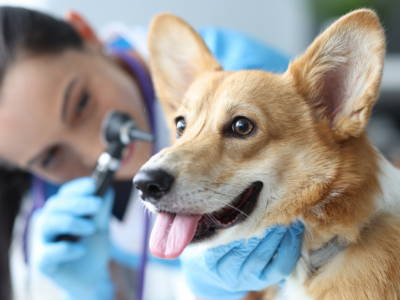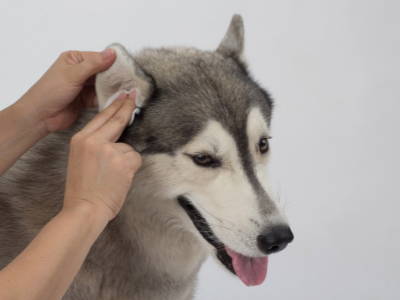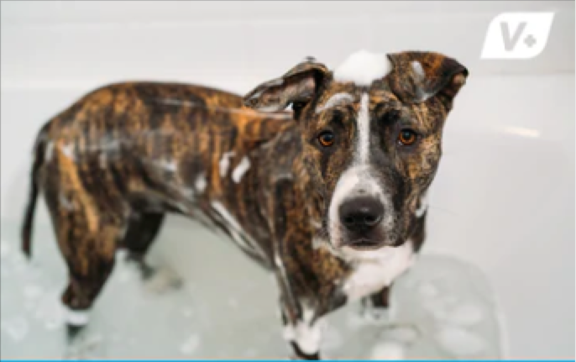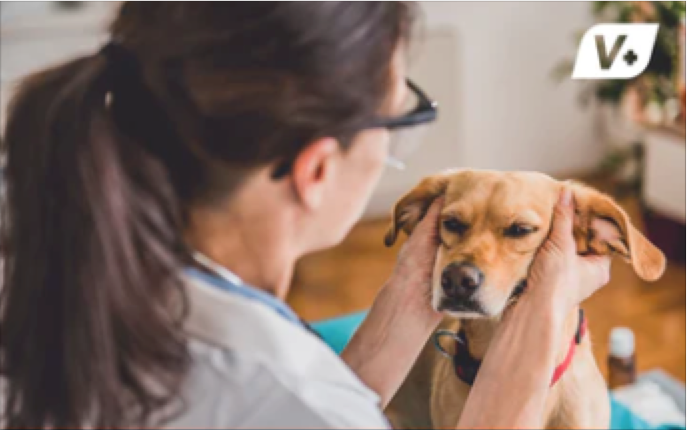Ear infections are no fun for anyone, pets included. Whether you’re dealing with a dog or human, the signs and symptoms of an ear infection can be pretty easy to spot. What can you do as a pet parent to ease the telltale discomfort that comes with an ear infection?
We’re covering the basics of dog ear infections, home remedies to try, and helpful hygiene tips for your favorite four-legged friend.
Symptoms of ear infection in dogs
In the early stages of an ear infection, dogs will do their best to resolve the issue on their own. A common behavior is pawing at the ear, which is their attempt at removing the irritant and stopping discomfort. The ear is made of delicate tissue and cartilage, so pawing and scratching at the ear may cause unnecessary pain and injury to your pup.
If your dog won’t stop shaking their head, chances are there’s something in the ear that shouldn’t be there. Shaking the head–like pawing at the ear–might be your dog’s way of dislodging whatever is in the ear that’s bothering them.

PET TIP
There are three types of ear infection in dogs: otitis externa (outer ear), otitis media (middle ear) and rarely otitis interna (inner ear). Infections of the outer ear are more common, while infections of the middle and inner ear can be more problematic.
4 common causes of ear infections in dogs
Pets & People
The common term for otitis externa in humans is ‘swimmer’s ear’.

PET TIP
Ears are what give our pups their signature expressions and are a big part of their personality! Dog ears are gloriously diverse, and ear shape varies greatly between breeds. But what all dogs have in common is a deep, L-shaped ear canal. This makes them more susceptible to ear infections making good hygiene all the more important!
Home remedies & treatments for dog ear infections (and when to call the vet)
- Gently wiping out the ears after bath or swim time. Focus on cleaning the inside of your dog’s ear flap, entry to the ear canal, and the fur surrounding the ear with a soft towel or a drying ear wipe. This step is extra important for parents of floppy-eared pups!
- Inspecting your dog’s ears after outdoor play. Looks for signs of environmental debris like dirt, thorns, bugs like ticks, or anything that doesn't belong in the ear. If you think debris has already entered your dog’s ear canal, use a gentle ear wash to flush the area.

- Create a calm environment for your pet. Jumping right into things can be stressful for your dog, so get them relaxed with gentle petting or snuggling before you begin.
- Start by wiping down the area to prevent additional debris from entering the ear. Using an ear wipe can also acclimate your dog to the feeling of your touch–this is especially important if the area is already tender.
- Apply the tip of the dog ear wash bottle to the ear canal and fill the entire ear canal with fluid. Then gently–but firmly–massage the base of the ear.
- Your dog will often shake out the excess fluid after this step. Then be sure to wipe out the excess fluid with a cotton swab, makeup remover pad or soft cloth and dry the ear flap to prevent residual debris or moisture from getting into the ear canal.
- If your dog is itching or experiencing redness and inflammation, try a vet-recommended antibacterial ear flush. Certain ingredients can help target uncomfortable symptoms for your pup! Chlorhexidine is a disinfectant that decreases bacteria in the ears, while Ketoconazole is an antifungal designed to treat yeast ear infections.
- For dogs with active ear infections, apply medicated ear drops daily to address chronic or acute symptoms. Look for dog ear drops with Hydrocortisone or ear drops with silver particles to effectively target itching, redness, and inflammation inside the ear.
- Keep the area free of wax, discharge, crust, and debris with a cleansing ear wipe that’s designed specifically for dogs.
How vets treat an ear infection
Putting the Vet in Vetnique

Pet Parents are Also Reading
Join the Pack!

Sign up for exclusive deals, curated pet tips from veterinarians, and product launches!
Pet Parents are Also Reading...
Mar, 2021
Related Articles

Join The Pack
Sign up for exclusive deals, curated pet tips from veterinarians, and product launches!


















